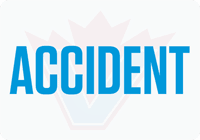Our community can turn one of the largest celebrations in North America into one of the greenest ones!

Photos submitted
BY SARBJIT SINGH & BALJIT SINGH SABHARWAL
IN 2013, I joined the City of Surrey’s Environmental and Sustainability Advisory Committee (ESAC) and the very first presentation I listened to was one regarding waste management. It was, to say the least, an eye-opening first committee meeting. I was impressed with the strides our city was making in handling waste. I took what I learned that day and when Vaisakhi came around a few months later, our family began a conversation about foam products.
My father, Banta Singh Sabharwal, had just finished purchasing supplies for our annual stall in front of our business location. When I saw the styrofoam plates and cups, I talked with him and my brother Baljit about the problems of styrofoam and even though our cost would be slightly more, the environmental impacts were staggering: several thousand pieces of foam ending up in the environment for who knows how many centuries or millennia.
It was a conversation that would lead us to using only paper plates and cups, and eventually compostable plates made from sugarcane fibres.
This awareness of the impacts of foam products (foam is a standard term that refers to an expanded polystyrene) made us look at the entire Vaisakhi event. What we noticed was that the event organizers and volunteers did an amazing job of waste pickup, however, what really was the problem was what we, as a community, put into the actual garbage bags. We also noticed that the majority of the items are, by volume, foam. Our personal campaign in our own stall was something we had to take to the entire community celebrating Vaisakhi.
So following a discussion in our ESAC committee about polystyrene products (like foam), I spoke to my brother and we felt we should engage the Sikh community and create an initiative to replace styrofoam with compostable products at our city’s annual Vaisakhi Parade. With the guidance of Councillor Mike Starchuk, the chair of our committee, we went into a year of planning and in March of this year made a presentation to the ESAC as to our intention of creating an awareness campaign. I can only tell you the encouragement that we received was amazing.
 Our initiative hopes to educate people as to the impacts of styrofoam products and that there are alternatives available. A five-year goal to go Styrofoam-free for Vaisakhi patrons started this year with an introduction and awareness of what we use to serve food in.
Our initiative hopes to educate people as to the impacts of styrofoam products and that there are alternatives available. A five-year goal to go Styrofoam-free for Vaisakhi patrons started this year with an introduction and awareness of what we use to serve food in.
So far the campaign has been received very well, with businesses and individuals voicing their support and making change within their own circle.
We have all heard about the 3 golden R’s of environmentalism: Reduce, Recycle, and Reuse. However our aim is to introduce an ‘R’ that is a better option to Recycling, and that is Replace. By replacing foam based products with ones that disintegrate in the environment in a much shorter time (two months for sugarcane and paper, and anywhere from six months to two years for bioplastics).

HERE are some suggestions for food stalls that we think would help our environment:
* Of course, no foam. Use paper plates (easily available in bulk in retail stores). The reason we suggest sugarcane is because it is the leader right now for sustainable compostable products. It grows yearly, is an agricultural product and is created from bagasse, the leftover material full of fibre after the juice has been extracted from the sugarcane. Sugarcane products also easily decompose at the City of Surrey’s newly built biofuel facility. Think about it, your waste fueling the very garbage trucks that pick up the waste! To reiterate the point: NO foam cups, plates or containers.
* No plastic spoons. Use bioplastic serving items like forks and spoons. Even better would be compostable wood ones.
Since our campaign went online, some great suggestions have been given by the community. Suggestions like how to reduce your foam usage:
– keep one spoon or fork for all items. If you eat five items, one spoon would cut the plastics use by 80%. Bring your own spoon and you will cut down your plastic use by 100% and save the food stall money as well.
– Some have brought their own containers
– Reduce the amount of consumption.
These suggestions alone can make a huge impact on what is going into our waste streams. Of course, this change will take time, which is why we have set a five-year target. Our aim isn’t to make anyone feel bad of what has been done in the past, but to encourage change through an awareness of what we do in the future.
Also, this change we are hoping for at Vaisakhi, isn’t limited to Vaisakhi; we can take this campaign into our homes, and businesses and other events. It should spark a sense of awareness within and spread it around to others all over the world.
If there are any more suggestions please send them to our facebook page facebook//foamfreevaisakhi.
Please have a safe and wonderful Vaisakhi celebration this year, and with these things in mind I have full faith that our community can turn one of the largest celebrations in North America into one of the greenest ones.
Happy Vaisakhi from us!










